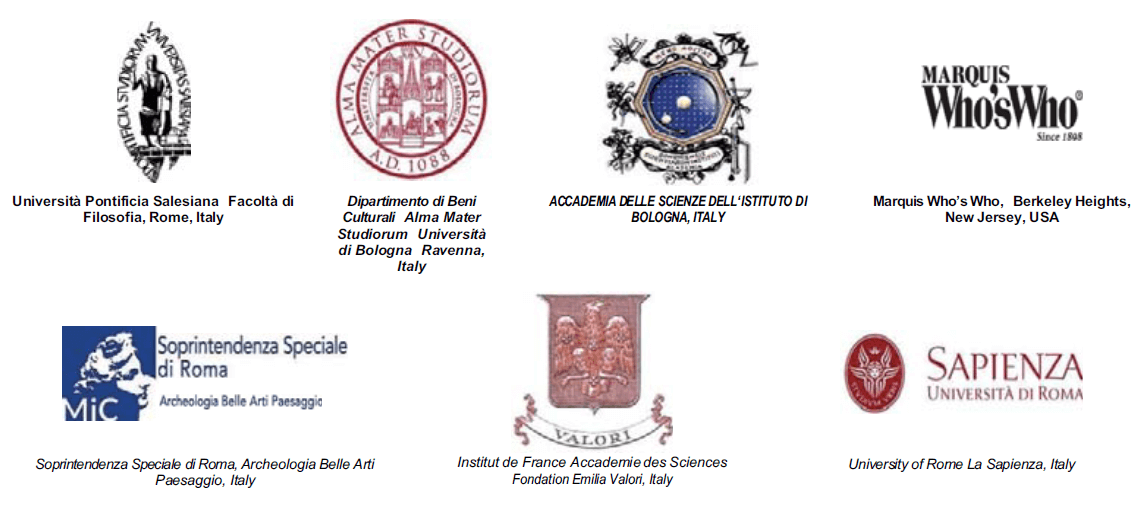Investigation on the Role of Agitation in the Desalination Process of Ceramics
DOI:
https://doi.org/10.6092/issn.1973-9494/6173Keywords:
ceramics, desalination, restorationAbstract
The porous structure of excavated ancient potteries (especially potteries with a firing temperature below 1000 ̊C) are in general saturated with salts. Desalination is therefore one of the primary steps in the conservation and restoration process of historical porous materials. Since salinity can cause significant damage to ceramic artifacts, they must be subjected to a careful process of desalination. As water-sensitive clay-based ceramics may deteriorate or collapse during long periods of contact with water, alternative desalination methods should be identified to minimize potential damage to the pottery material. New methods such as raising the temperature of the washing water and/or using surfactants have also been suggested as alternative techniques in the desalination process to avoid long periods of contact time. In this study, acceleration of the desalination process based on a unified theoretical formulation is discussed and the role of agitation to enhance the rate of desalination is demonstrated. It was found that the main cause of deficiency in current desalination processes is due to a stagnant liquid layer near the interface of the ancient object and the water, known as concentration polarization. Agitation enhances the efficiency of desalination by minimizing the thickness of the concentration polarization layer.References
GRIFFITHS, D., 1999, The Role of Interdisciplinary Science in the Study of ancient Pottery, Interdisciplinary Science Review, 24 (4), pp. 289-300.
RÖMICH, H., 2006, Glass and Ceramics, Conservation Science Heritage Materials, RSC Publishing, Cambridge.
BUYS, S., OAKLEY, V., 1999, The Conservation and Restoration of Ceramics, Butterworth-Heinemann, London.
O’BRIEN, P., 1990, An Experimental Study of the Effects of Salt Erosion on Pottery, Journal of Archaeological Science, 17, pp. 393-401.
RIJNIERS, L. A. PEL, L. PUININK, H. P., KOPINGA, K., 2005, Salt Crystallization as Damage Mechanism in Porous Building Materials – A Nulear Magnetic Resonance Study, Magnetic Resonance Imaging, 23, pp. 273-276.
UNRUH, J., 2001, A Revised Endpoint for Ceramics Desalination at the Archaeological Site of Gordion, Turkey, Studies in Conservation, 46, pp. 81-92.
JANG, S., NAM, B., PARK, D., KIM, H., LEE, C. H., YU, J. U., 2013, Desalination Characteristics for Ceramics Excavated from Taean Shipwreck, Korea, Journal of Cultural Heritage, 14(3), pp. 229-237.
CLEGG, F., BREEN, C., CARTER, M. A., INCE, C., SAVAGE, S. D., WILSON, M. A., 2012, Dehydroxylation and Rehydroxylation Mechanisms in Fired Clay Ceramic: A TG-MS and DRIFTS Investigation, Journal of American Ceramic Society, 95 (1), pp. 416-422.
ARTIOLI, G., 2010, Scientific Methods and Cultural Heritage, Oxford University Press, New York.
RODRIGUEZ-NAVARRO, C., DOEHNE, E., SEBASTIAN, E., 2000, Influencing Crystallization Damage in Porous Materials Through the Use of Surfactants: Experimental Results Using Sodium Dodecyl Sulfate and Cetyldimethylbenzylammonium Chloride, Langmuir, 16, pp. 947-954.
LUBELLI, B., van HEES, R. P. G., 2010, Desalination of Masonry Structures: Fine Tuning of Pore Size Distribution of Poultices to Substrate Properties, Journal of Cultural Heritage, 11, pp. 10-18.
PROBSTEIN, R. F., 1994, Physicochemical Hydrodynamics: An Introduction, John Wiley & Sons Inc., Hoboken, NJ.
TREYBAL, R. E., 1980, Mass-Transfer Operations, third Ed, McGraw-Hill, New York.
KOOB, S., NG, W., 2000, The Desalination of Ceramics Using a Semi-Automated Continuous Washing Station, Studies in Conservation, 45, pp. 265-273.
Downloads
Published
How to Cite
Issue
Section
License
Copyright (c) 2015 Mohammad C. Amiri, Somayeh Noghani, Mohammad Amin Emami
Copyrights and publishing rights of all the texts on this journal belong to the respective authors without restrictions. Authors grant the journal right of first publication.
This journal is licensed under a Creative Commons Attribution 4.0 International License (full legal code).
See also our Open Access Policy.






